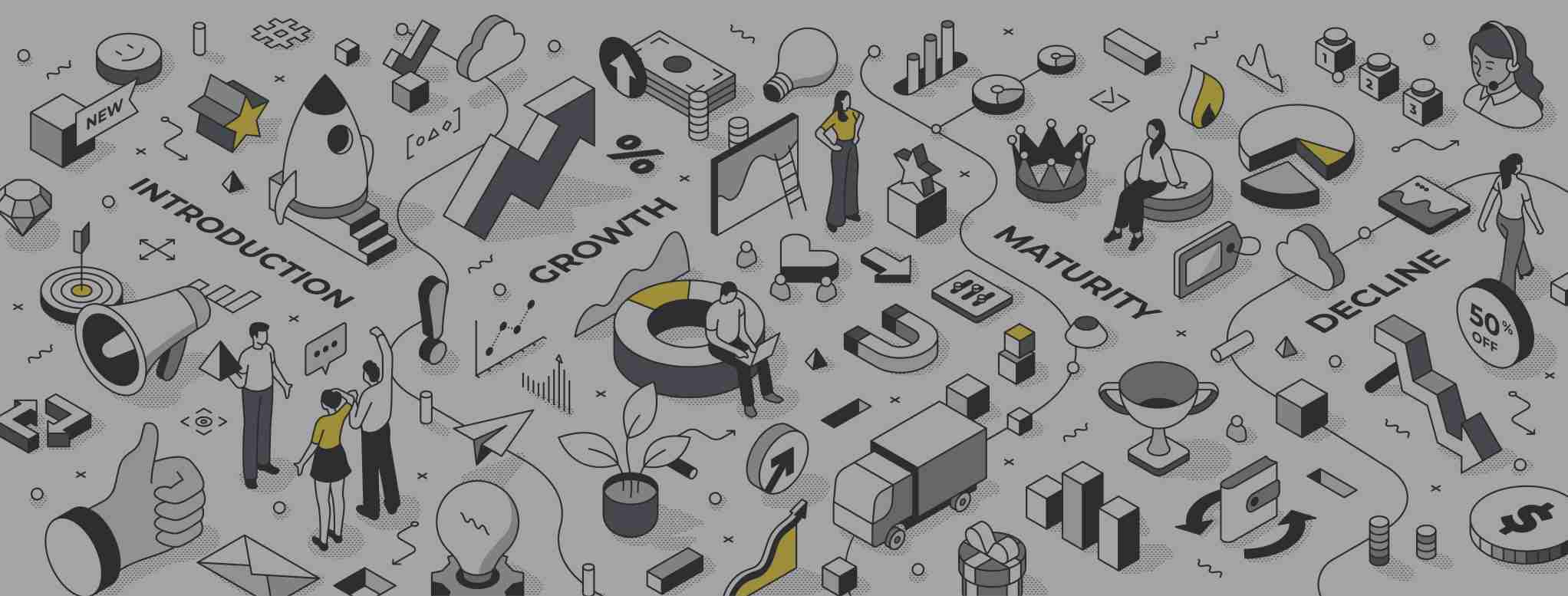The pirate metrics framework draws its name from the underlying AARRR model, as you can see it reads like a pirate drawl. However, there’s no buccaneering here (excuse the pun) this is all serious stuff and will go someway toward helping you find a pivotal framework for your product’s growth. Originally outlined by Dave McClure way back in 2007, we’ve adhered to them over the years as a baseline for growth.
The AARRR framework is a set of activation metrics for your start-up SaaS company. They help you govern your product management and provide ongoing value for your potential customers, activated users and paying customers.
These metrics are for your product marketing team to use your platform as a marketing channel for your product or service so users go beyond the free trial or freemium use.
What is the Pirate model framework?
The pirate metrics are a 5-step framework known as the AARRR model. This powerful step-by-step approach to product development guides you beyond vanity metrics and ties each stage of the framework to relevant stages of the user journey.
For those that don’t know what the individual metrics are, we break them down below. All metrics are focused on the measurement of user behaviour.
Step one of the AARRR model - Acquisition
Step one of the model focuses on how potential users can find your product. Start with your total addressable market (TAM) and pinpoint the users that can find maximum benefit from your product. This segment will be the subset that represents your reachable target market.
To do this focus your efforts on tracking conversion rates and how those conversions happened. For this, you will typically need a tool that sends user behaviour to your CRM as well as a tool that tracks user behaviour in your product.
Hone your sights on tracking every step of the funnel throughout the customer journey. Make sure that you track every conversion that takes place; forms, engagement of your content or social media posts, visits to your product and pricing pages and so on.
Step two of the AARRR model - Activation
Step two of the pirate metrics framework focuses on customer experience. Once you nail your customer acquisition channels the next job is to ensure you deliver an experience that both educates and excites your customer.
It’s imperative that users quickly understand your value proposition and how the product will help them achieve their goals. Quick time-to-value and helping them reach the “a-ha” moment is your priority and optimising your onboarding process is where you need to focus. You should check out this article we produced prior which focuses on 8 key PLG metrics to focus your strategy.
Pirate metrics step three - Retention
Retention is the key to continued growth. It reduces the cost of net-new business (or acquiring new customers) and gives a good indication that the platform continues to deliver value to your users. Ultimately your goal here is to reduce churn.
Your tactics for retention are straightforward, keeping your users engaged is critical to ensuring your churn rate is lower than your user acquisition rate. Developing a customer insights strategy would go a long way to achieving this.
AARRR metric step four - Referral
If your team have managed to nail the previous three metrics, you are absolutely on your way to success. But remember success is earned continually, it’s not a destination, but a process. Once you’ve got retention locked down, it’s time to ask your fans to become advocates for your platform.
As we all know social proof is one of the best ways to prove worth; more important than your Gartner recommendation, and more important than your industry awards, although both go some way to backing up your bonafides.
Your objective here is to design a systemised approach to the referral process that rewards both the referrer and the referee. The goal here is to provide enough value for both parties that makes sense, like access to additional premium features for the referrer and extended access to premium features for the referee.
Rewards that help your users further enjoy the platform that they already love is great, but don’t get complacent. Like all good intentions, some may see this as a way to constantly upsell, so be prepared to test.
Pirate metrics step five - Revenue
Now we come to the last of the five pirate metrics, revenue. This is the most important as it keeps the lights on in the business. The interesting thing about this metric is that it will be impacted by things outside of the user base. For example your company culture; do you ship updates on time, does your sales team avoid misselling, is your onboarding completely optimised and customer-focused, are you fiscally responsible with your revenue, and so much more?
But if you’ve optimised the other four metrics, I’m sure you have these other bases covered.
Now that you have a consistent flow of happy users, it’s time to start optimising your price-to-value ratio and start calculating your pricing and whether your business model is sustainable.
Nail that, and you can tick off your AARRR metrics as optimised for this quarter. Don’t forget, like all metrics you need to monitor them constantly and consistently, set a periodical timeframe to review your metrics and ensure a smooth growth trajectory for your business.
Why not read our guide to product-led growth for SaaS leaders to dive deeper into your PLG journey?
I hope you enjoyed this short read, if you need any help with optimising against these metrics, please reach out to the team for a quick chat and see if we can reorientate you in the right direction.




